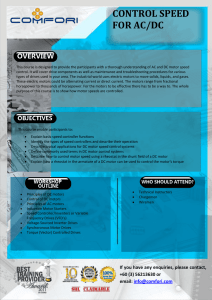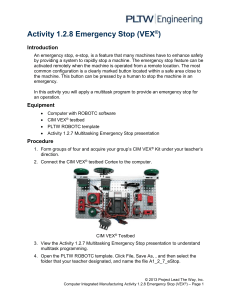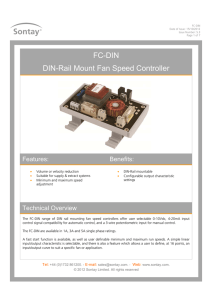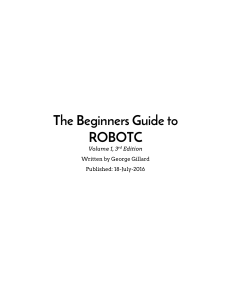Tech Talk #2: VEX Control System Kit
advertisement
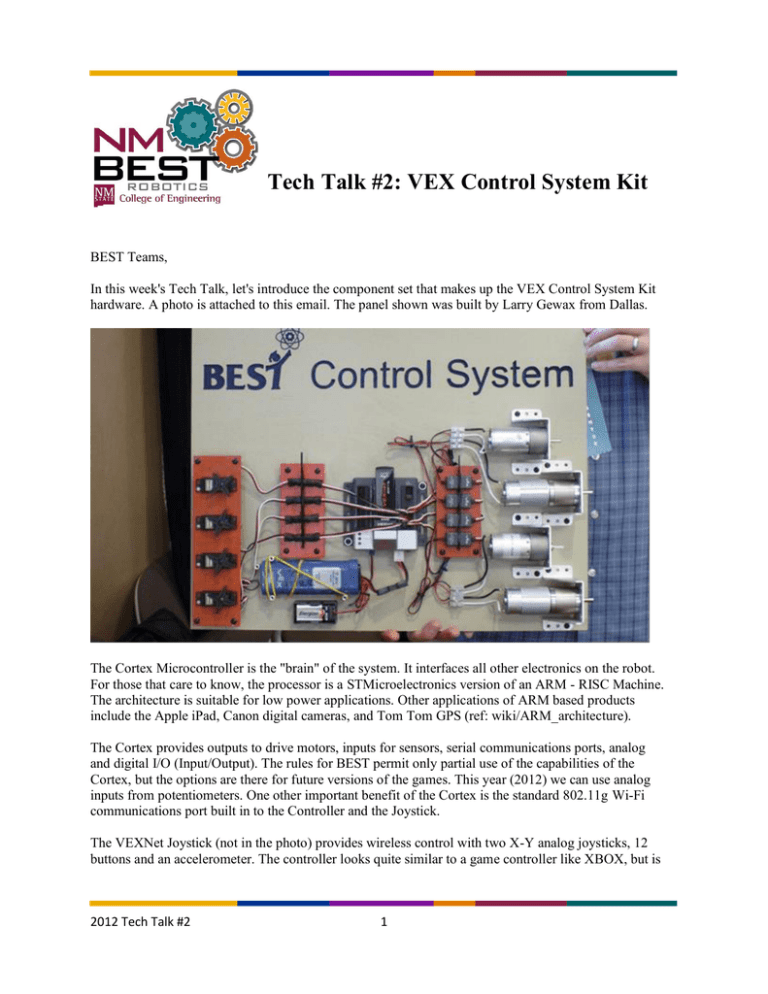
Tech Talk #2: VEX Control System Kit BEST Teams, In this week's Tech Talk, let's introduce the component set that makes up the VEX Control System Kit hardware. A photo is attached to this email. The panel shown was built by Larry Gewax from Dallas. The Cortex Microcontroller is the "brain" of the system. It interfaces all other electronics on the robot. For those that care to know, the processor is a STMicroelectronics version of an ARM - RISC Machine. The architecture is suitable for low power applications. Other applications of ARM based products include the Apple iPad, Canon digital cameras, and Tom Tom GPS (ref: wiki/ARM_architecture). The Cortex provides outputs to drive motors, inputs for sensors, serial communications ports, analog and digital I/O (Input/Output). The rules for BEST permit only partial use of the capabilities of the Cortex, but the options are there for future versions of the games. This year (2012) we can use analog inputs from potentiometers. One other important benefit of the Cortex is the standard 802.11g Wi-Fi communications port built in to the Controller and the Joystick. The VEXNet Joystick (not in the photo) provides wireless control with two X-Y analog joysticks, 12 buttons and an accelerometer. The controller looks quite similar to a game controller like XBOX, but is 2012 Tech Talk #2 1 proprietary to VEX and is not recognized by a Windows PC. The Joystick uses six AAA rechargeable batteries that are provided. We may also have plug-in power supplies available at the Game Field. The main battery that powers the robot is a 7.2 VDC, 3000 mAh Nickel-metal Hydride (NiMH) pack. Fully-charged, the battery could measure 8.7 V and discharge to 6.6 V (ref: wiki/NiMH). The capacity of 3000 milliampere hours (mAh) permits more than 3 Amps of current in the shorter duration of the competition. Your mileage may vary. The large motor runs at 43 RPM unloaded at 320 mA. The listed stall torque is 23.5 in-lbs at 3340 mA. Generally, the large motor is used for driving wheels and the small motor for arms and accessories. Always consider the effect of wheel diameter or arm leverage when sizing for motors. The small motor runs at 90 RPM unloaded at 210 mA. The listed stall torque is 9.5 in-lbs at 2390 mA. Notice the new sturdy mounting brackets for the motors. These will be in your kit again for 2012, but you are not required to use them. The main problem has been mounting screws or clamping methods that damage the motors; hence the custom brackets. The Motor Controller is included to prevent stall currents from overloading the VEX Cortex. In the photo, these are the four black modules mounted beside the motors. The Servo Adapter performs a similar function to protect the VEX 3-wire motor ports when driving servos. These modules look like a black bump in the cable. The Servos differ from motors in that they are not free-rotating; they move less than 360 degrees and stop. A variety of Servo "Horns", mounts, and accessories allow for creating articulated levers and arms. Since it is too early to discuss Game-specific configurations, I'll give the generic recommendation to be careful about overloading the Control System. This is a good opportunity to teach concepts of torque, leverage, mechanical advantage, current draw, battery capacity, thermal limits and other hazards. As always, please contact me with questions and your thoughts on how to make the 2013 BEST season a successful and exciting endeavor for your students. Robert Hull NM BEST Technical Consultant New Mexico State University College of Engineering 575-646-1556 rhull@nmsu.edu 2012 Tech Talk #2 2



